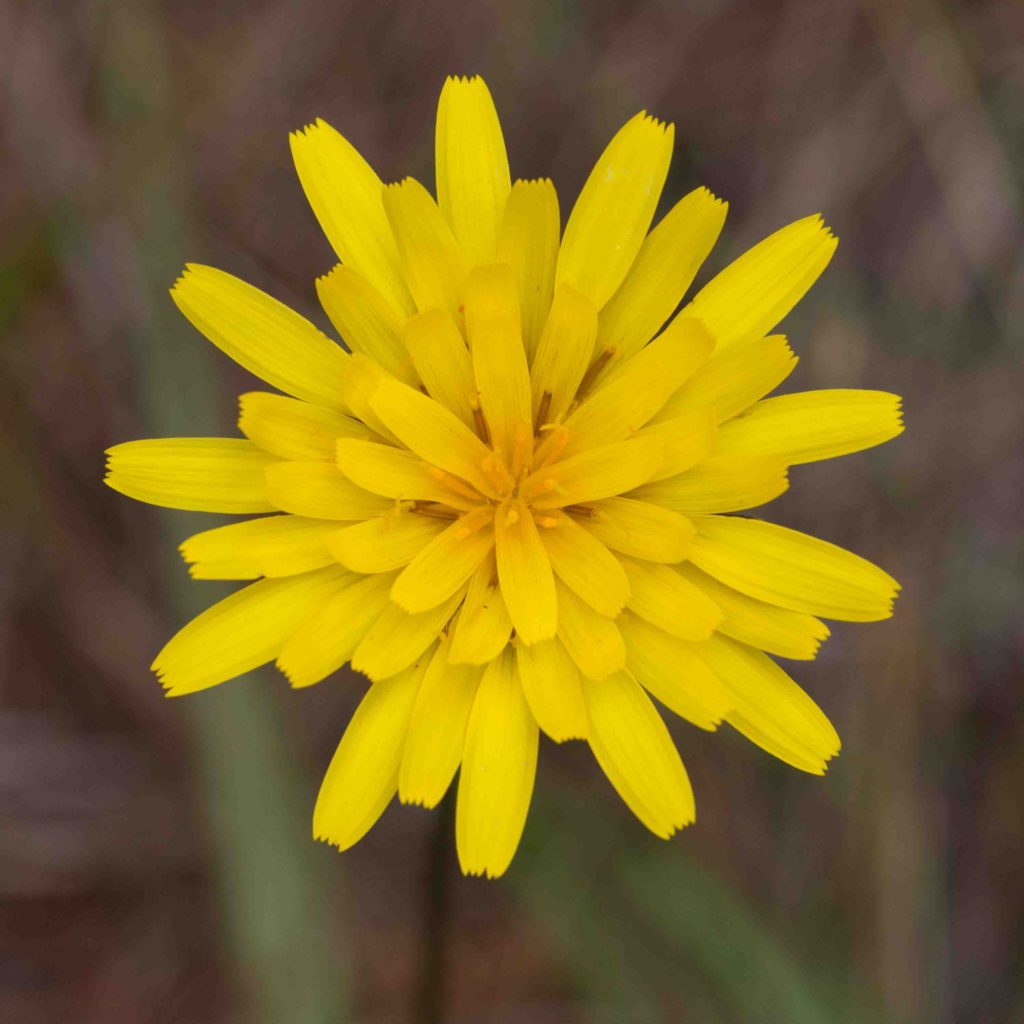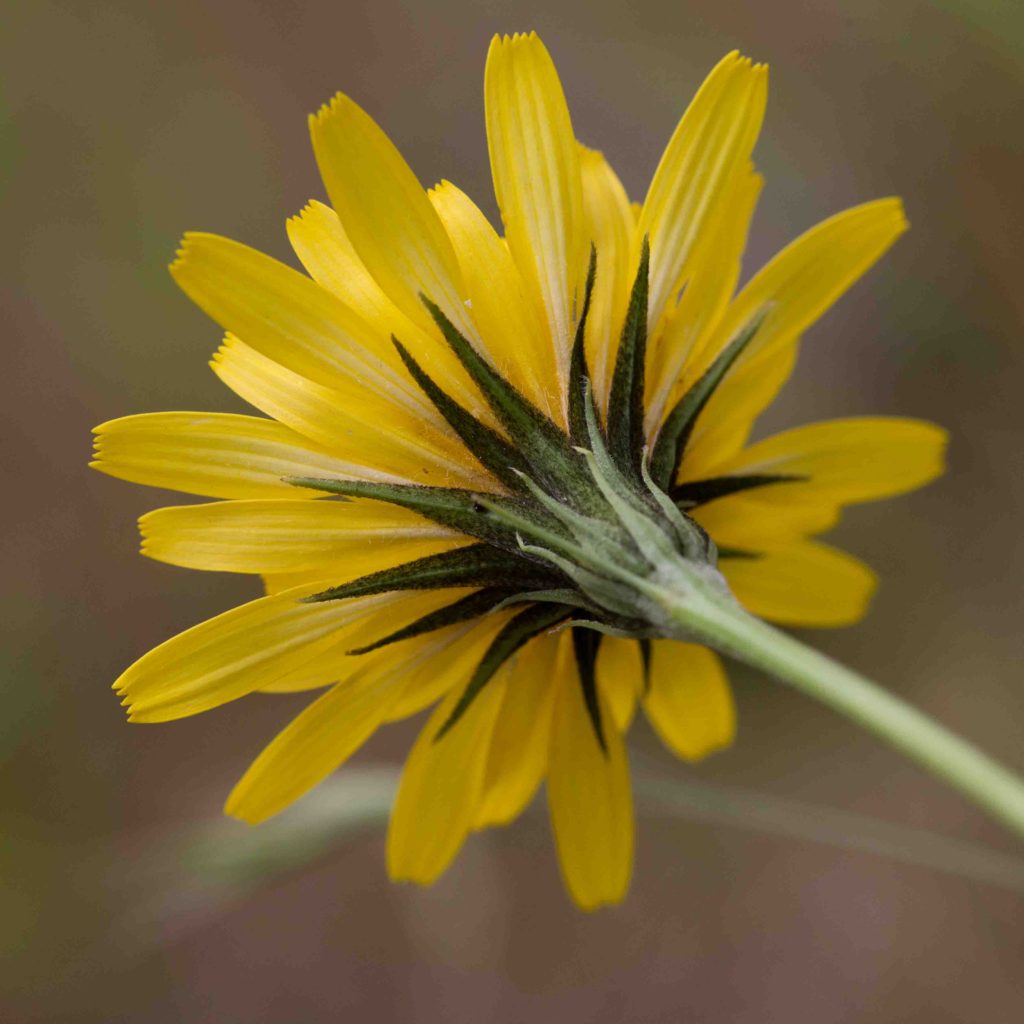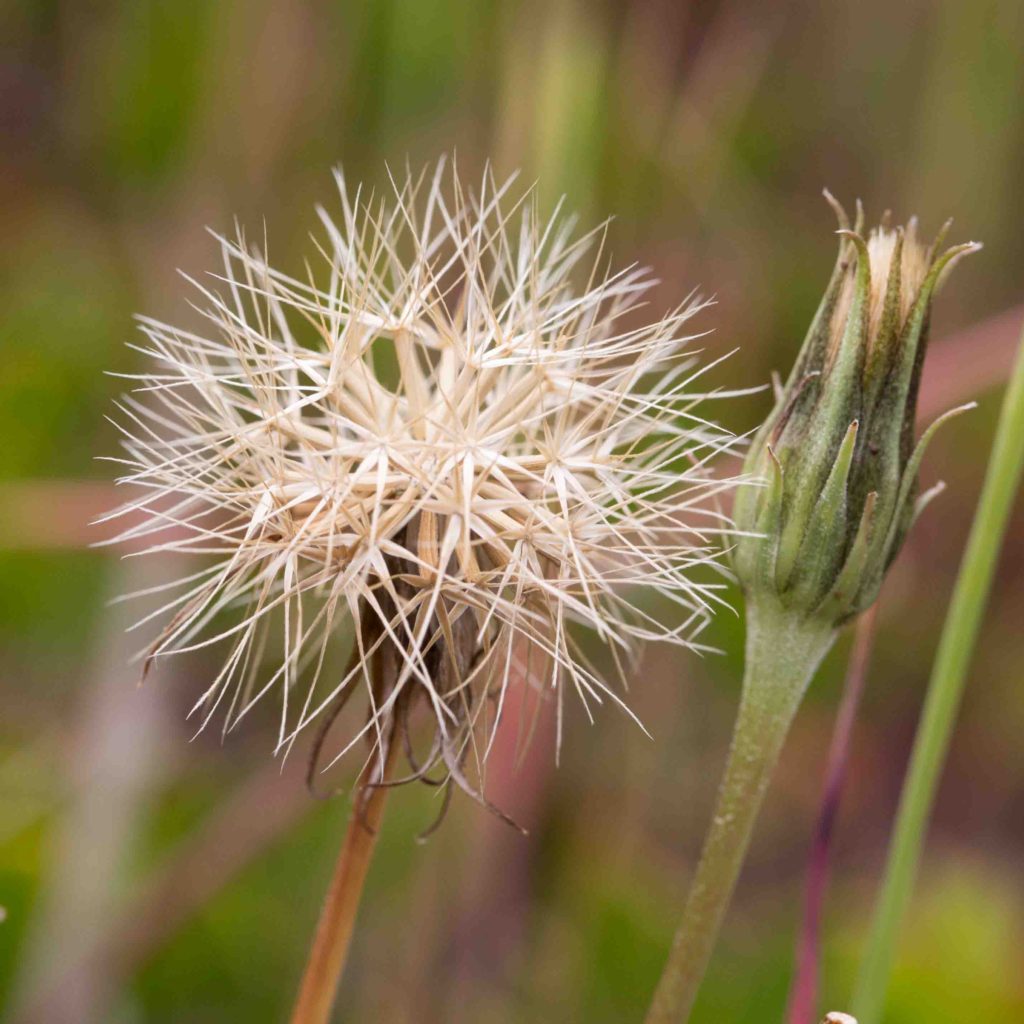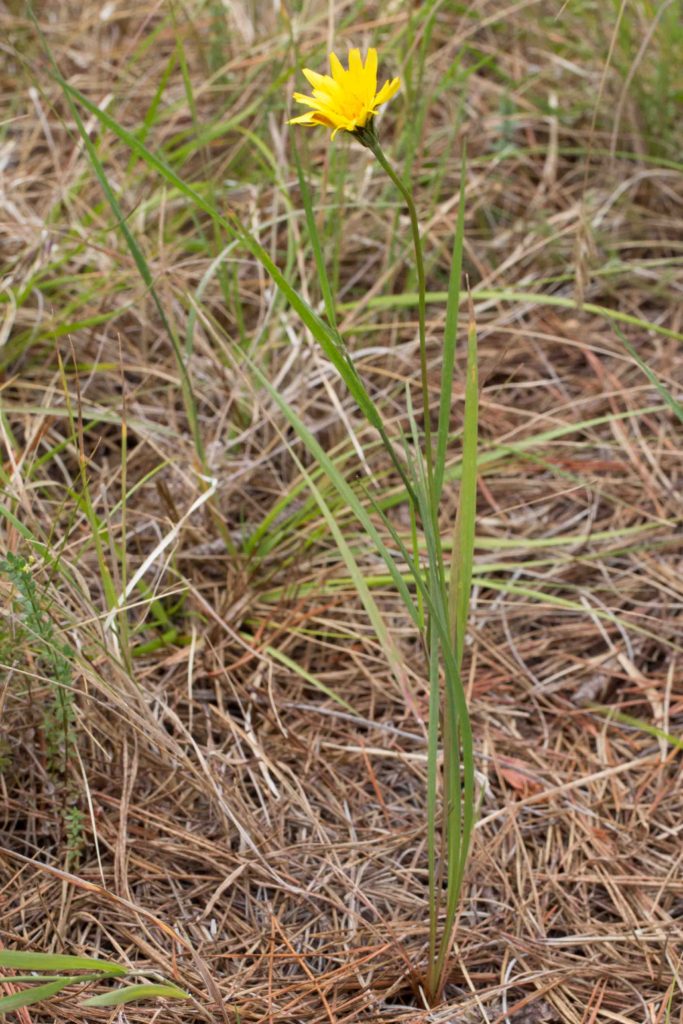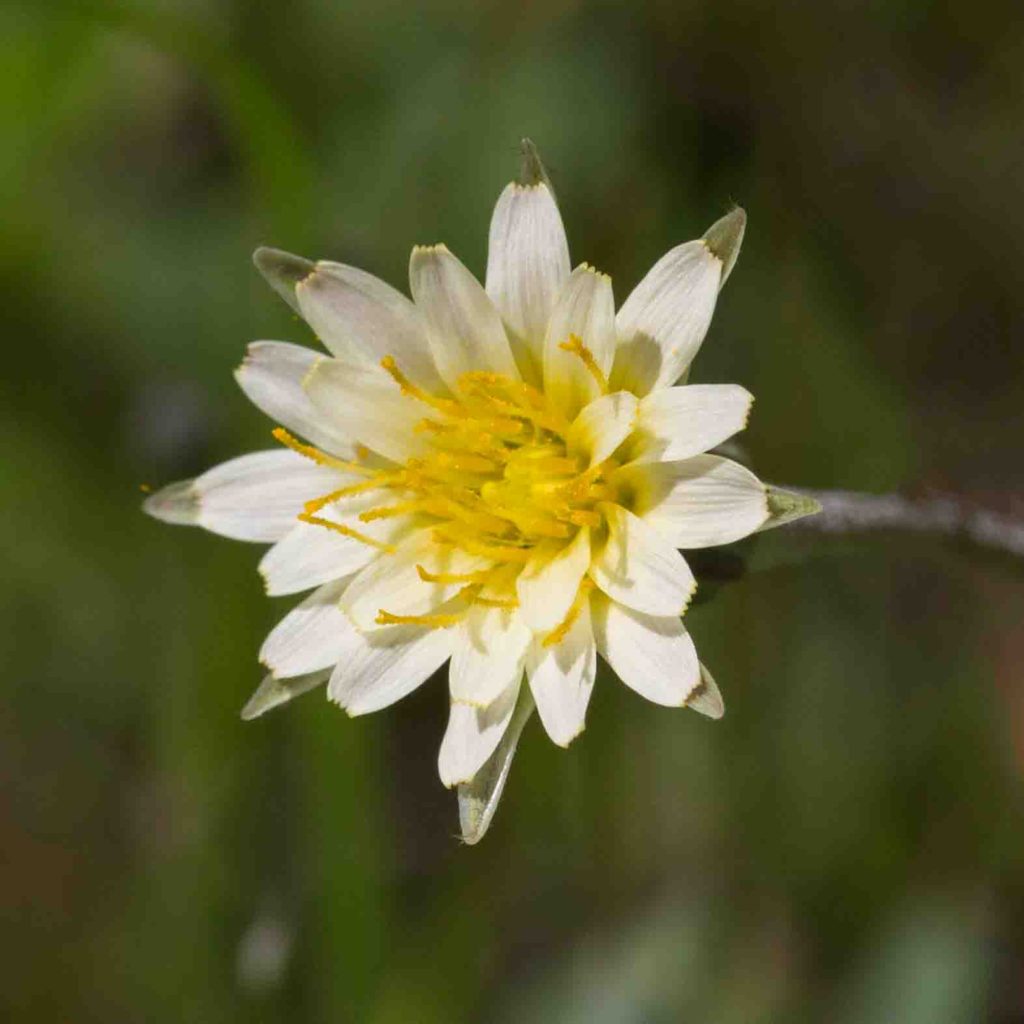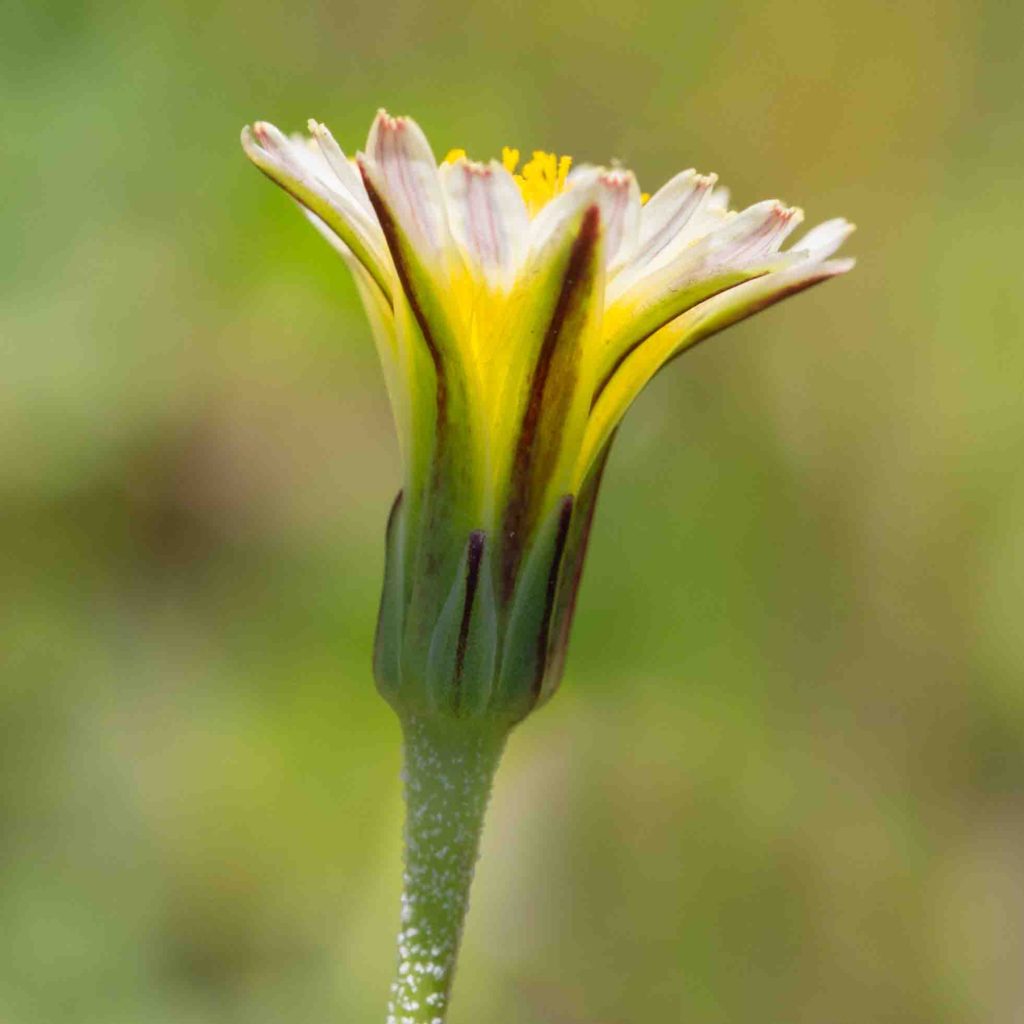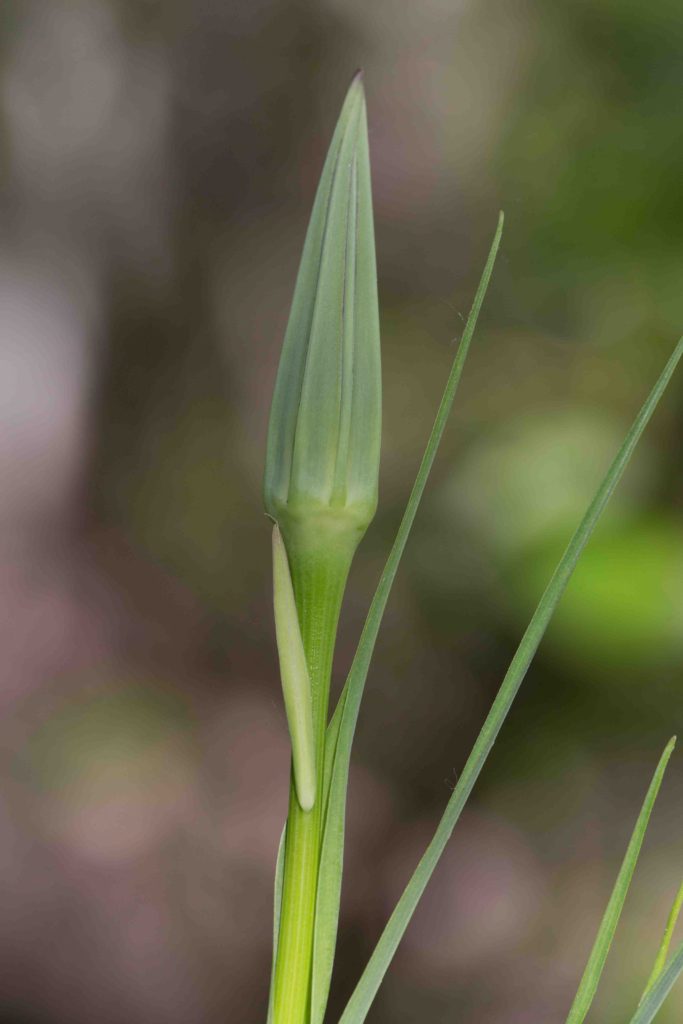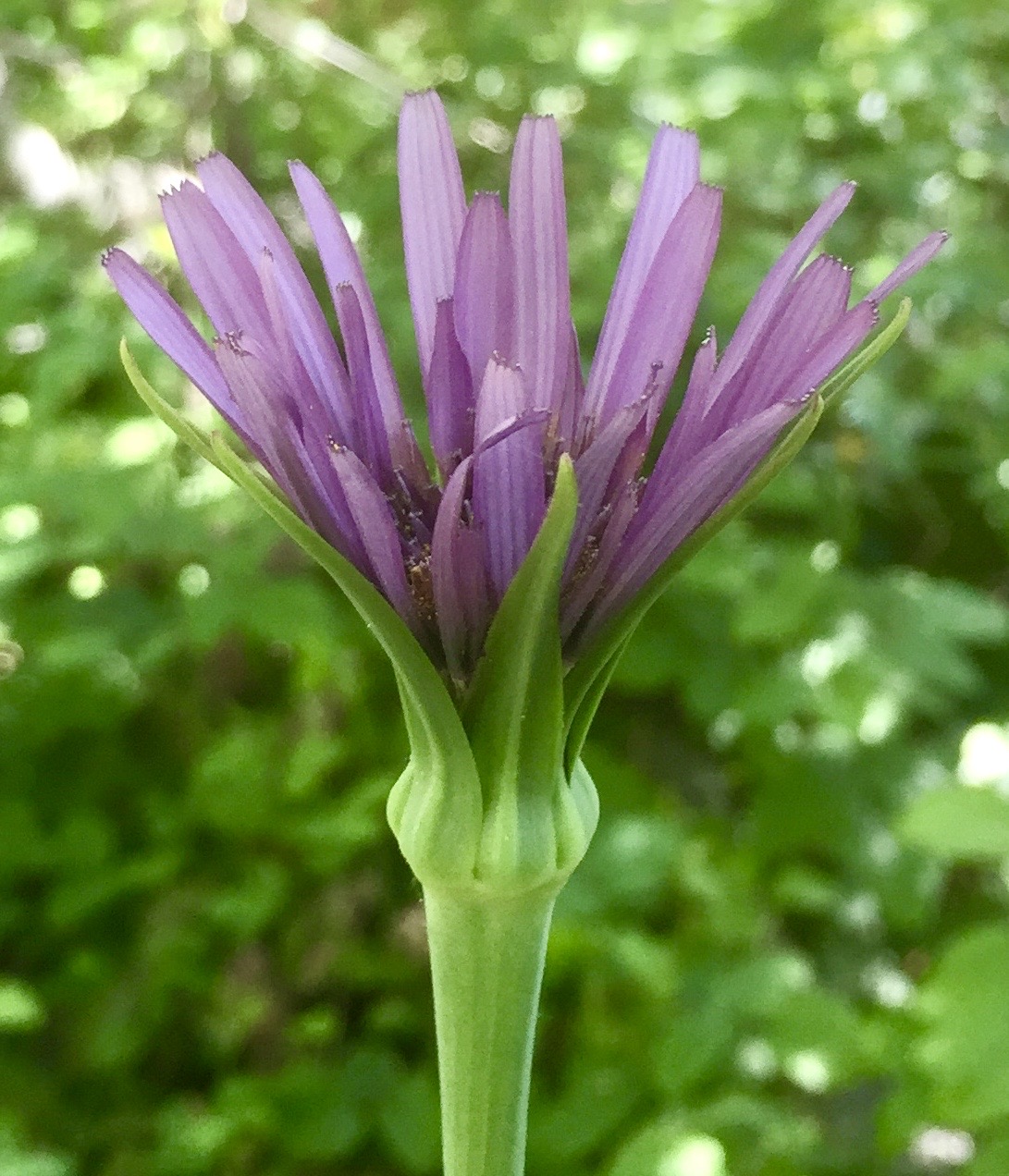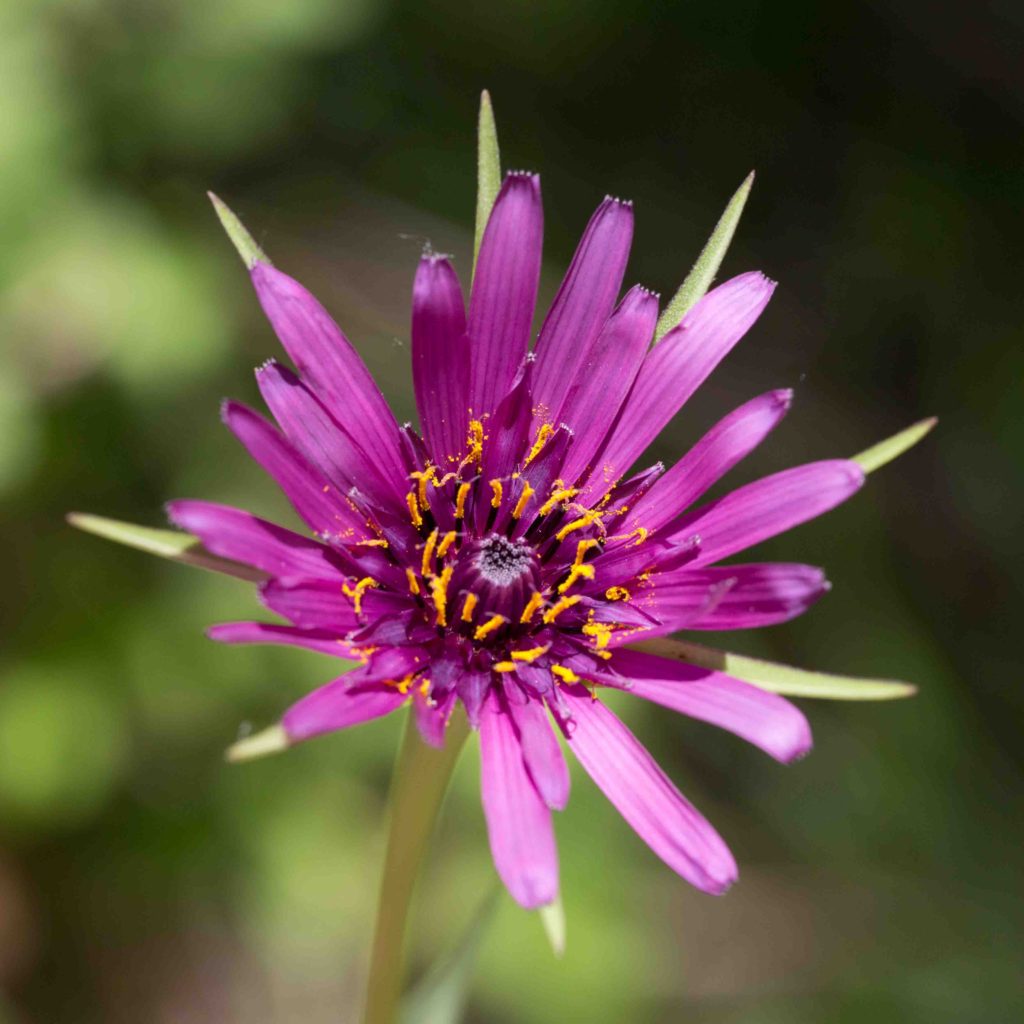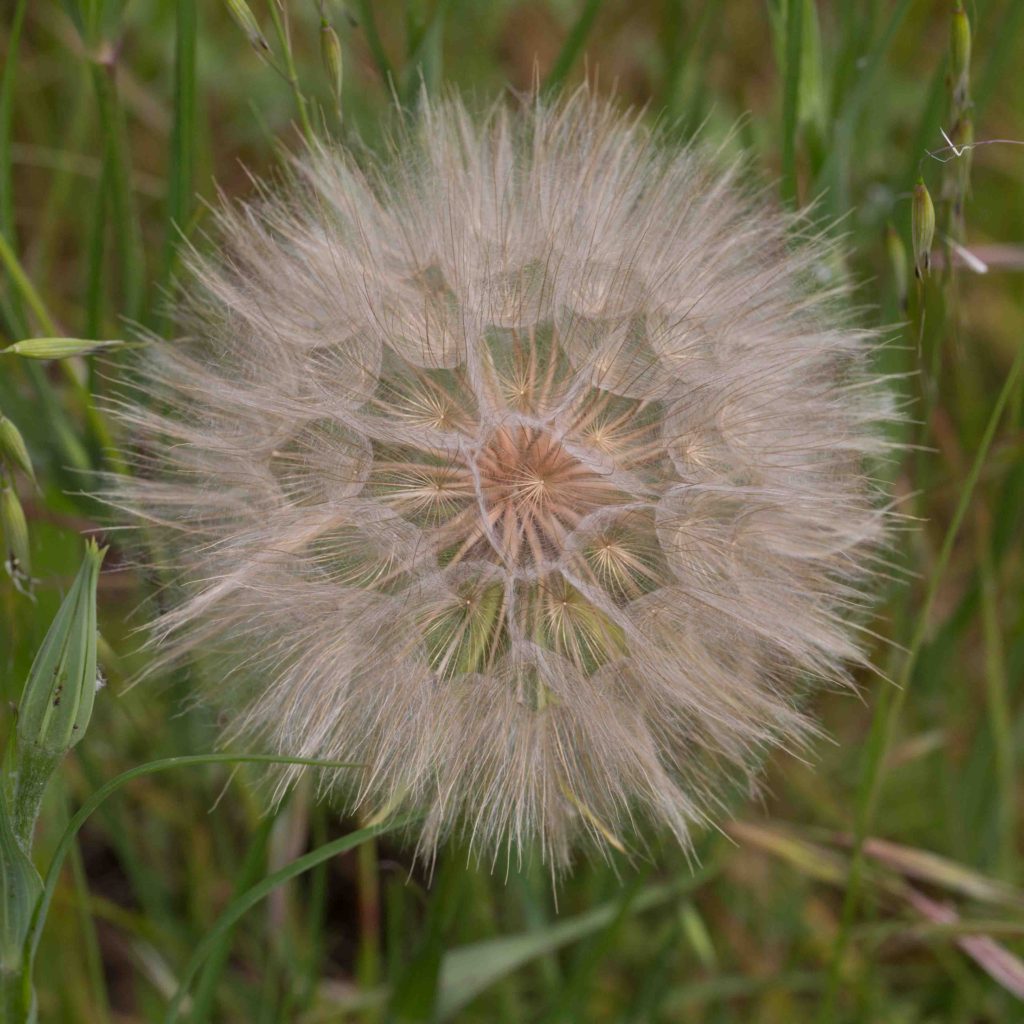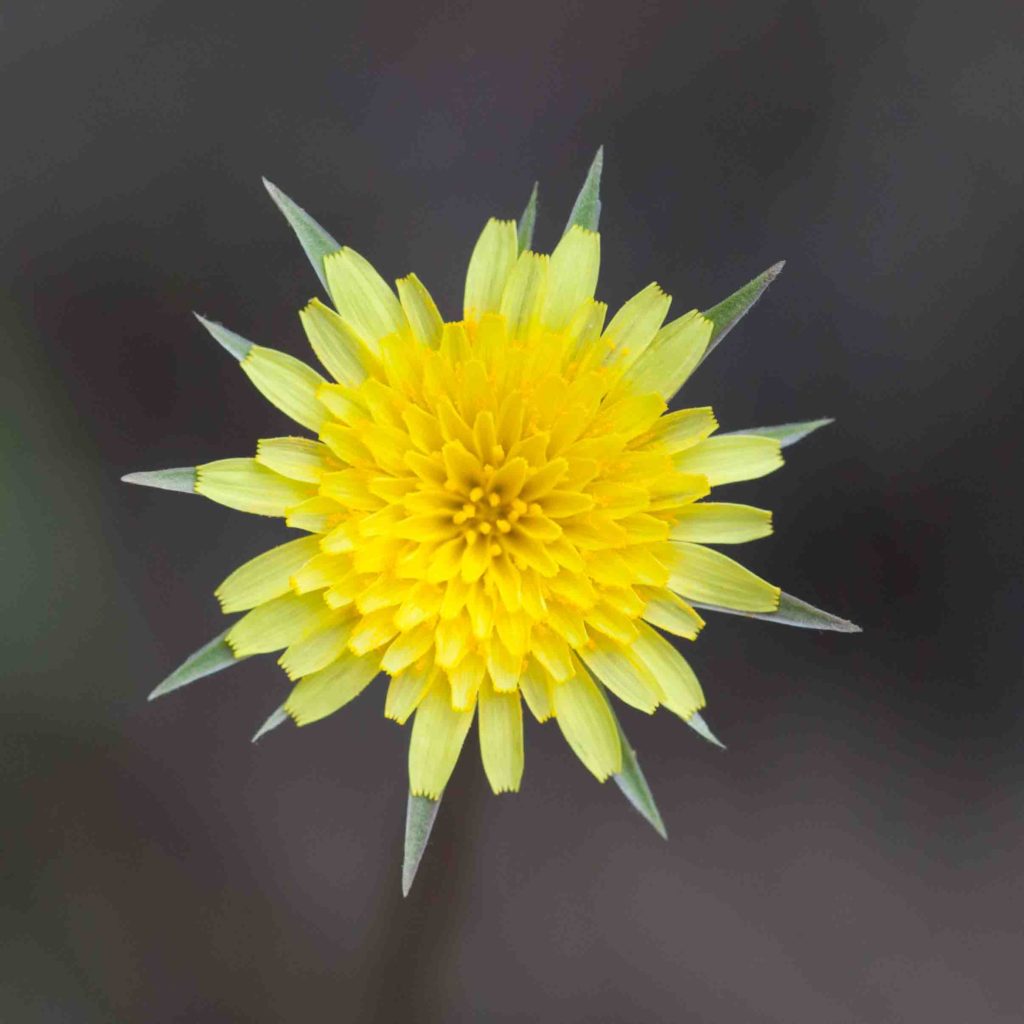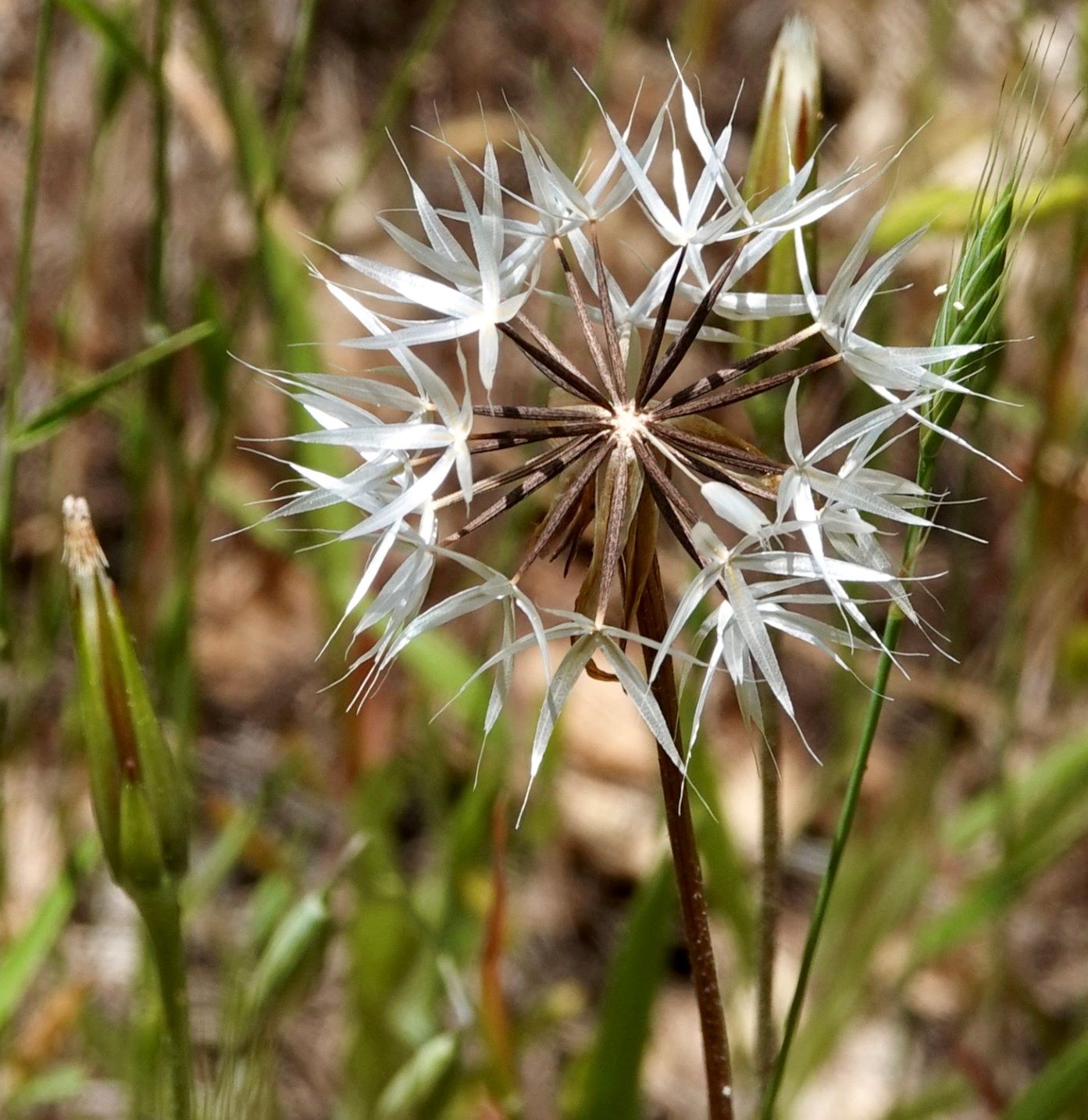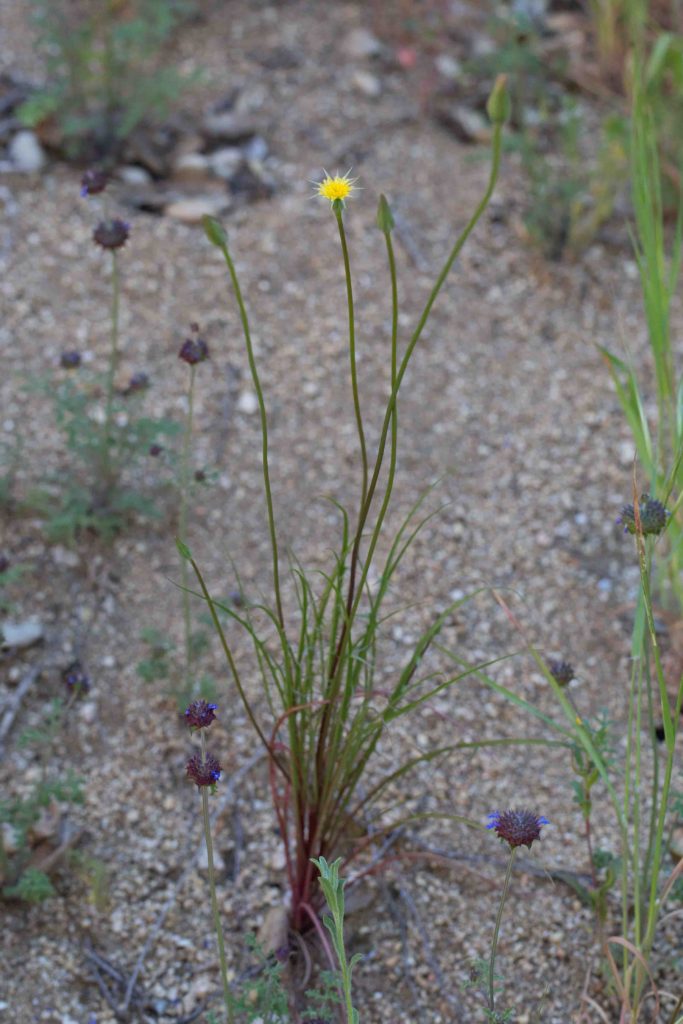Asteraceae: Sunflower Family – Cichorieae (Dandelion) Tribe: Silverpuffs etc.
The Sunflower family is a very large family with over 25,000 members. Botanists subdivide the family into a number of tribes, of which 14 are present in Monterey County. The Cichorieae (Dandelion) tribe has several distinctive features. First, they all have stems with milky sap. Second, they do not have disk and ray flowers like typical daisies. Instead they have “ligules”, which resemble strap-like ray flowers. Unlike ray flowers, ligules have both male and female parts – a necessity for reproduction in the absence of disc flowers. A third difference is that ray flowers have 0–3 lobes at the tip; ligules have 5. This page covers a few plants with puffy seedheads.
Marsh Microseris / Marsh Scorzonella – Microseris paludosa
Blooms:
Apr–June
Plant Height:
15–70 cm
Flower Size:
Large
Origin:
Native
Rare or Endangered?
Yes – 1b.2
Habitat:
Moist grassland, open woodland near coast
Notes:
This rare plant has slender, entire to lobed basal leaves that are up to 35 cm long, and a single inflorescence on a long, erect or curving peduncle. The head may be nodding when in bud. The single flower head contains 25–70 yellow ligules. At the tip of the straw-colored or dull white body of the fruit is a large, similarly colored pappus made up of 5–10 long, bristly scales. Although very slender, these are not bristle-tipped like those of Lindley’s Silverpuffs (Uroappus lindleyi, see below).
Derived Microseris – Stebbinsoseris heterocarpa
Blooms:
Apr–June
Plant Height:
10–65 cm
Flower Size:
Medium
Origin:
Native
Habitat:
Open, grassy places on rocky to clay soils
Notes:
This has a basal rosette of slender 5–35 cm long leaves. The inflorescence is on a tall peduncle, bearing a solitary flower head. This is made up of creamy-white to pale yellow ligules, often reddish on the lower surface. Phyllaries are glabrous, in 2–4 series. Fruits are 10-ribbed, and gray to brown. Each fruit has a a pappus of 5 long, dull white to brown scales, with a 3–8 mm long bristle extending from the notched tip.
Purple Salsify – Tragopogon porrifolius
Blooms:
Apr–June
Plant Height:
8–100 cm
Flower Size:
Large
Origin:
Europe
Habitat:
Disturbed places
Notes:
This tall plant has distinctive flowers, ligules of pale to rich purple and exceeded by the long subtending phyllaries. Unlike the other plants shown on this page, the phyllaries are in a single series, all of the same length. Buds are long and slender. Leaves are long and grass-like, with straight tips. Fruiting heads are impressively large, each fruit with a pappus of stout plumose bristles. Photo #2 by CJH.
Lindley’s Silverpuffs /Uropappus – Uropappus lindleyi
Blooms:
Apr–June
Plant Height:
5–70 cm
Flower Size:
Medium
Origin:
Native
Habitat:
Grassland, woodland, chaparral, generally loose soils
Notes:
The fruiting head is more often noticed than the flowers, and is rather more prominent. The flower has distinctive long phyllaries in 3–4 series, the longer ones extending past the ligules, like the much-larger flowered Salsify (Tragopogon sp., see above). Flowers tend to close up by midday. The fruits have a slender brown body, tipped with 5 silvery pappus scales, themselves very slender and bristle-tipped. Sometimes confused with Blow-wives (Achyrachaena mollis). But even a cursory examination of Blow-wives will show that its flowers, fruiting heads and growth habit are very different — not surprisingly since it does not belong in the Dandelion tribe at all (it is a member of the Sunflower tribe). Photos #2 and 4 by CJH.
